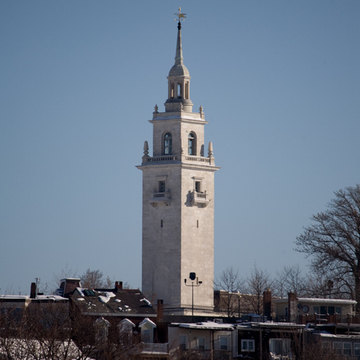On Dorchester Heights, the historic name for this hill, George Washington mounted cannon to force the British to evacuate Boston in 1776. This monument commemorates that bloodless event, the first major victory of the Americans in the Revolution. Peabody and Stearns won the competition among eight firms, in October 1899, to design the tower. After considering brick and granite, they selected marble as the material. The Georgian Revival design consists of a simple shaft in two stages, each with an observation platform, along with a cupola and spire.
Freestanding and row houses of the late nineteenth century encircle Thomas Park, the monument's grounds. Notable examples include the Frederick Walbridge House (56 Thomas Park), an unusual Stick Style design with Gothic bay windows, porches, and cupola; and the Thomas Gogin House (c. 1873, 61 Thomas Park), built for the supervisor of a local iron works. East of the monument rises South Boston High School (1899–1901, Herbert D. Hale, 95 G Street), a buff brick Classical Revival building that became the controversial symbol of busing for school integration in the 1970s.


















